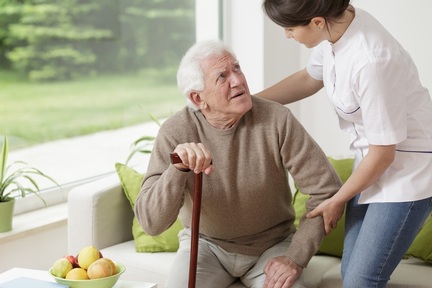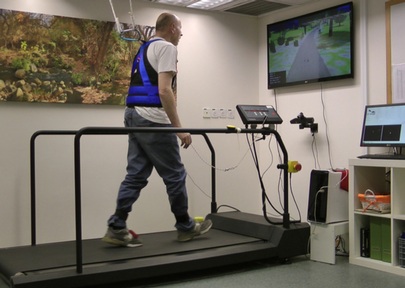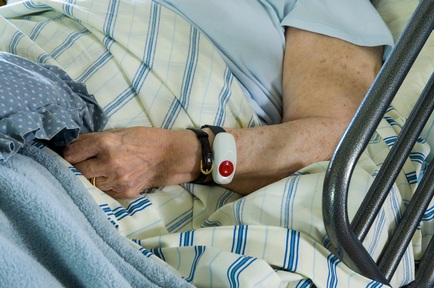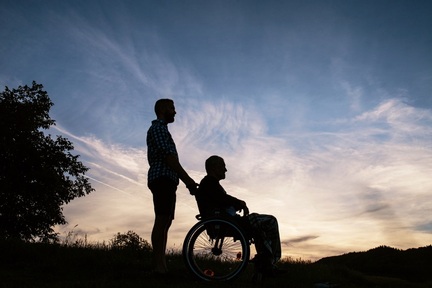Virtual reality treadmill training could prevent falls in older people
Combining virtual reality and treadmill training could help prevent falls in older adults, according to new research published in The Lancet.

Researchers believe the intervention, which combines the physical and cognitive aspects of walking, could potentially be used in gyms, rehabilitation centres or nursing homes to improve safe walking and prevent falls in older adults or people with disorders which affect movement such as Parkinson’s disease.
Study author Dr Anat Mirelman of the Center for the study of Movement, Cognition and Mobility (CMCM) in Israel, said: “Falls in older people often occur because of tripping and poor obstacle negotiation while walking. Falls often start a vicious cycle, which has many important negative health consequences.
“Older people’s ability to negotiate obstacles can be impaired because of age-related decline in cognitive abilities like motor planning, divided attention, executive control and judgement, yet current interventions for falls in older adults typically focus on improving muscle strength, balance and gait."
Physical mobility
“Our approach combines treadmill exercise and virtual reality to help improve both physical mobility and cognitive aspects that are important for safe walking. We found that virtual reality plus treadmill training helped to reduce fall frequency and fall risk for at least six months after training.”
In adults aged 65 and over falls account for between one to two per cent of all healthcare expenditure in high-income countries. Approximately 30 per cent of older adults living in the community and as many as 60-80 per cent of older adults with mild cognitive impairment, dementia or Parkinson’s disease, fall at least once a year.
Falls can cause injuries, loss of independence, disability, institutionalisation and possible death. Without injuries, falls often lead to a fear of falling, avoiding leaving the house and depression, which in turn often leads to inactivity, muscle weakness, impaired balance and gait, more falls and further social isolation.
Researchers analysed data from 282 participants from five clinical sites in Belgium, Israel, Italy, the Netherlands and the UK between 2013 and 2015. All participants aged 60-90 were able to walk at least five minutes unassisted on stable medication and had reported at least two falls in the six months before the start of the study. Nearly half of all participants had Parkinson’s disease and some had mild cognitive impairment.
Participants were assigned to treadmill training with virtual reality (146) or treadmill training alone (136). The virtual reality component consisted of a camera that captured the movement of participants’ feet and projected it onto a screen in front of the treadmill, so that participants could ‘see’ their feet walking on the screen in real time.
Treadmill simulation
The game-like simulation was designed to reduce the risk of falls in older adults by including real life challenges such as avoiding and stepping over obstacles like puddles or hurdles, and navigating pathways.
On average, participants in each group took part in 16 training sessions over six weeks, with each session lasting 45 minutes. Prior to training, participants in the treadmill only group had an average of ten falls per six months and participants in the treadmill plus virtual reality group averaged eleven falls per six months.

During the six months after training, the incidence rate of falls decreased in both groups, with a 49 per cent decrease found in the number of falls in the treadmill plus virtual reality group.
The biggest improvement was seen in participants with Parkinson’s disease, which researchers suggest could be because they had higher rates of falls at the start of the study, or that virtual reality was able to help improve cognitive and motor skills which are affected in Parkinson’s disease.
Dr Mirelman added: “Treadmills are widely available, and the additional cost of treadmill training plus virtual reality is about £3,446 for the set-up. Our study used personalised supervision, but this might not be necessary in everyday practice where group training might be more suitable.”
Professor Stephen Lord of the University of New South Wales, said: “The finding of a 49 per cent reduction in falls is in-line with the most effective fall preventions that have assessed more traditional group-based and home-based exercise interventions in older people, and is well above the average reduction of 17 per cent for exercise interventions reported in systematic reviews.”
However, researchers have cautioned that the follow-up period for participants in this trial was only six months per patient, so further research will be needed to identify if there is a long-term effect and whether maintaining the training period could help to extend the benefits of training.
For more information, visit: http://www.thelancet.com/journals/lancet/article/PIIS0140-6736(16)31325-3/abstract.
Latest News Analysis
 04-Sep-19
Extra £1.5 billion announced for social care in Chancellor's Spending Review
04-Sep-19
Extra £1.5 billion announced for social care in Chancellor's Spending Review
 02-Jul-19
Department of Health forced to rethink care homes' nursing rates after legal challenge
02-Jul-19
Department of Health forced to rethink care homes' nursing rates after legal challenge
 18-Jun-19
Overnight care workers forced to sleep in offices and told 'bring your own bedding'
18-Jun-19
Overnight care workers forced to sleep in offices and told 'bring your own bedding'
 14-Jun-19
Back in the closet: Third of care home staff have had no LGBT+ awareness training
14-Jun-19
Back in the closet: Third of care home staff have had no LGBT+ awareness training
 11-Jun-19
PM candidates on social care: Rory Stewart calls fixing care an 'unfinished revolution'
11-Jun-19
PM candidates on social care: Rory Stewart calls fixing care an 'unfinished revolution'